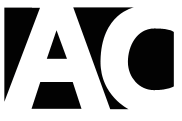
For most people, it’s a myth. A state of being that they’ve only dreamed of and rarely seen. Inbox zero. The ability to get an email inbox down to empty – not just once a year but on a consistent basis.
I’ve been obsessed with it for years, but only in the last three has it become something realistic to aim for. All too often the quest for inbox zero results in a whole lot of wasted time – the dreaded email sap that can make it impossible to get anything else done. Tim Ferriss clearly illustrates just how much time the average person wastes on email in his book, The Four Hour Work Week. It’s terrifying.
So how do you clear your inbox and actually stay productive on a daily basis? Here are five habits I’ve implemented that not only make it possible – they make it a vital part of my day.
#1 – Schedule Email Response Times
One of the simplest-sounding tips to reduce time spent on email is to only check it a couple of times a day. But having recommended this to dozens of people over the years (and struggling with it myself) I know it’s easier said than done.
So we need to cheat a little. To do this, I schedule specific times to respond to emails and use a handful of tricks to avoid responding any more often.
- Email Quiet Times – Set specific times every day during which you will absolutely NOT check email. Whether it’s time set aide to focus on a specific task or time during which you will relax and work offline, this is the most productive 1-2 hour period you’ll have all day.
- 10 and 2 Scheduled Checks – Set times at 10 and 2 (or equally close times) to check messages every day. In the morning, 10am is perfect because it is close enough to the open of business to reply to important questions, but not so early that you spend the first hour of your day doing busy work. The same is true for the afternoon check after lunch.
- A Phone-Friendly Signature – Include a phone number (or multiple phone numbers) and an encouragement to call you with important issues in your signature. Most people will email first with an issue and only call if it is urgent. Use this to your advantage. I’ve seen people go as far as setting up autoresponders saying “I only check email twice a day; call me if it’s important”. Few people ever call.
If you follow these four tips, you can cut down on the percentage of the day spent focusing on email and get your inbox empty more often.
#2 – Use an Email Scheduler
One of the primary reasons email is never quite gone is because we reply to it far too often. This is how it goes.
Jenny sends you an email asking if you heard the message she left.
You write back and say you just did and that you need more time to review the process.
She writes back and asks you to speed up your review.
You write back and say you have started the review and are pretty sure it won’t be possible to do what she’s asking.
She asks if you are 100% sure.
You finalize your review and write back to say it is in fact possible, but that you’ll need to schedule a meeting.
Six emails. That’s how long it takes to get to where you actually answer Jenny’s question. The reason email schedulers are so effective is that they allow you time to get real work done between responses. When you reply, someone else is likely to reply just as fast. Stick to your set schedule and ensure your responses only go out within 1-2 hours of your allocated email checking time.
I use Boomerang for Gmail for this purpose and it saves me hours every single week.
#3 – Clear and Check Messages Offline Only
Gmail has an offline component, or if you are using a desktop client, simply disconnect from the Internet when you check and respond to emails. Checking when online ensures you will have more emails in your inbox before you finish replying to the old ones.
To avoid falling into this trap, use offline gmail to ensure you are only replying to a finite number of messages. If there are 82 emails when you login to your Outlook, there will still be 82 when you finish reading and replying. Not another 27.
#4 – Don’t Read Unless You Can Respond
Only read a message if you have the time to reply to it. It seems a small thing, but you are wasting huge amounts of time every week reading and rereading your emails. There’s the first check – often when you wake up or between meetings – when you read the messages, and then there is the second check when you actually have time to respond. But to respond you need to reread it.
Unless the message is such that you need time to think about your response, don’t read unless you currently have time to respond.
#5 – Segment Email By Priority
Most email clients, even the online ones, have some form of prioritization system in place to help you break down the messages into categories. Whether it’s the flagging system in Outlook or the priority inbox and separate inboxes for social and promotional messages that Google offers, you can break down your waves of email into categories.
Life gets a lot easier when your 117 emails turn into 18 important messages and 99 that can be ignored or even deleted.
There are dozens of effective tips to ensure your inbox stays as close to zero as possible on a consistent basis. Keep in mind that not all of these will work for everyone and each of them is a new habit that will take time to develop. Don’t expect to see changes overnight, but if you can make even one or two of these part of your routine, you’ll start to see measurable results sooner than you might expect.





